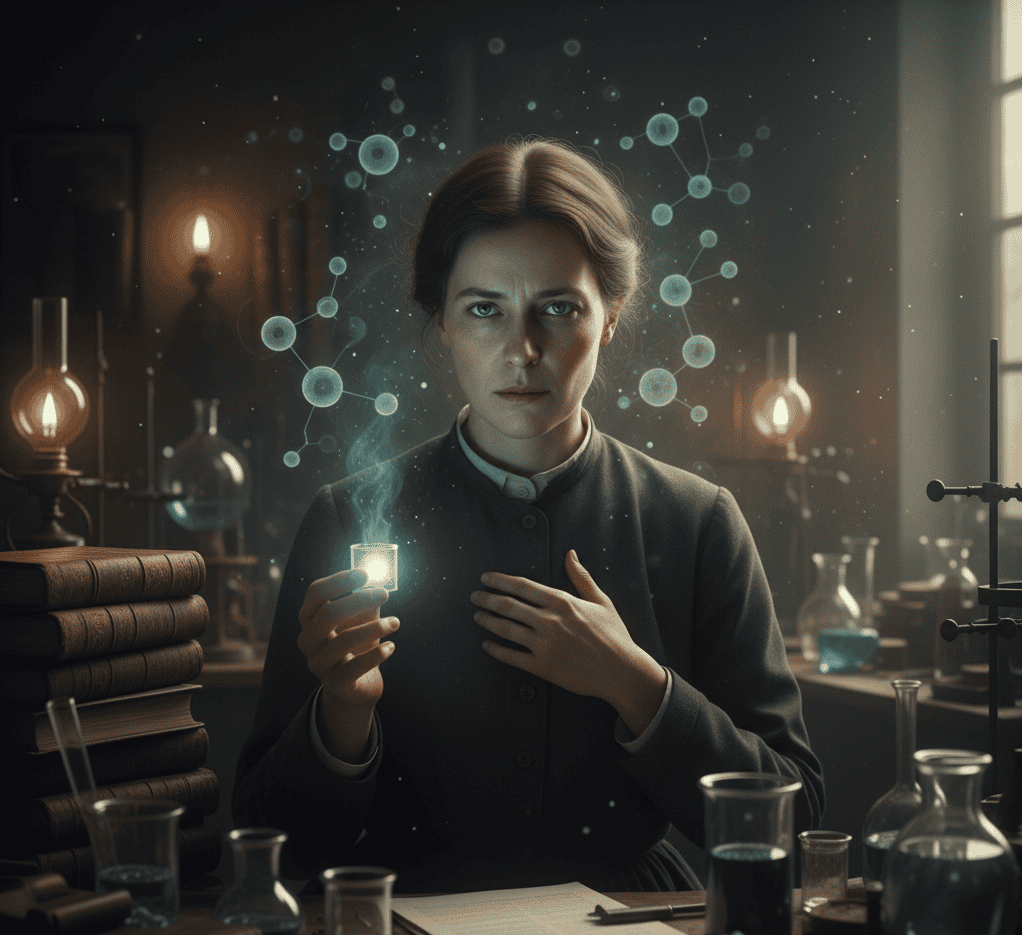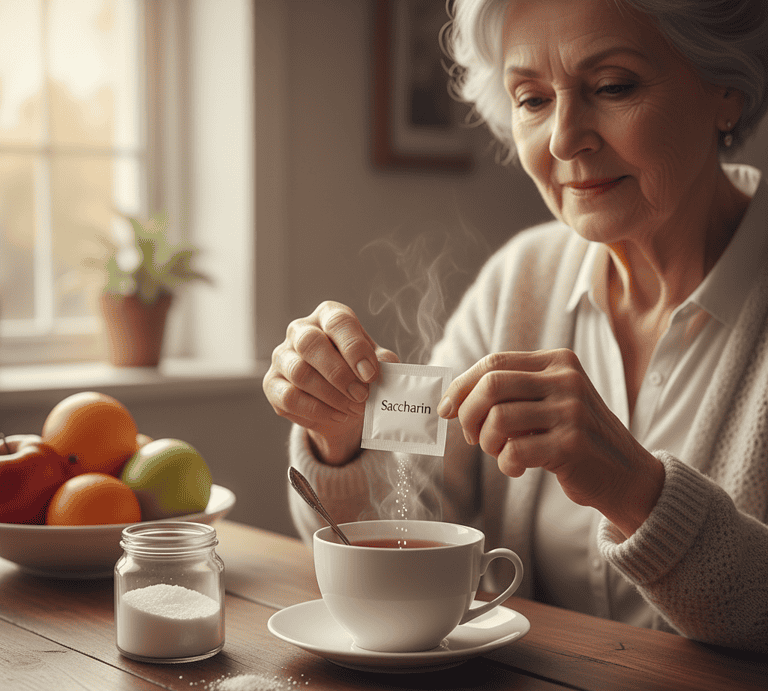Marie Curie – The woman who lit up the world and paid with her life

Childhood and the making of a brilliant mind
Marie Curie, born Maria Skłodowska on November 7, 1867, in Warsaw, Poland, grew up in a family that deeply valued education. Her father was a teacher of mathematics and physics, while her mother was the headmistress of a girls’ school. Despite living under Russian occupation, which imposed restrictions on Polish culture and education, Maria developed a passion for learning from an early age.
Gifted with a remarkable memory and an insatiable curiosity, she excelled in school and graduated high school with a gold medal at only 15. Yet, as a woman, she was not allowed to study at official universities in Poland. Instead, she joined the underground “Flying University,” where clandestine classes kept alive the Polish spirit of intellectual freedom.
To support her family and save money for her studies abroad, Maria worked as a governess. It seemed, for a time, that her dream of becoming a scientist would remain impossible. Still, she never abandoned the hope of going to Paris, where women were allowed to pursue higher education.
Foreigner In Romania and in need of a prescription for your chronic treatment?
Contact Dr. Petrache’s Virtual Clinic for any medical issue you encounter while in Romania. Send an email to: clinica@diabet-si-nutritie.ro
Student years at the Sorbonne
In 1891, Maria Skłodowska finally achieved her dream. She moved to Paris and enrolled at the Sorbonne, adopting the French form of her name: Marie. Life as a student was extremely difficult. She lived in a small, unheated attic room, often skipping meals due to poverty. Despite these hardships, she studied tirelessly.
In 1893, she graduated first in her class in physics, and in 1894, she obtained her degree in mathematics. During these years, she began her first research projects on the properties of steel and magnetism.
In a male-dominated academic environment, Marie had to prove her worth constantly. Through determination, brilliance, and humility, she earned respect and recognition. Though faced with prejudice and financial struggles, she persisted, convinced that her destiny was bound to scientific discovery.
A fateful meeting with Pierre Curie
In 1894, Marie met Pierre Curie, a respected French physicist known for his studies on magnetism and crystals. Their encounter changed both their lives. Pierre admired Marie’s passion and dedication, while she found in him not only a life partner but also a true collaborator.
They married in 1895, and their partnership was unique: a union of minds and hearts. Working side by side in a modest laboratory, with rudimentary equipment but extraordinary determination, they began to explore one of the greatest mysteries of their time: radioactivity.
The discovery of radioactivity
In 1896, Henri Becquerel discovered that uranium salts emitted invisible rays spontaneously. Fascinated, Marie chose this phenomenon as the subject of her doctoral thesis. She coined the term “radioactivity” to describe it.
While studying pitchblende, a mineral containing uranium, Marie noticed that its radiation was much stronger than expected. This suggested the presence of unknown elements. After painstaking chemical separation, carried out under exhausting conditions, Marie and Pierre announced in 1898 the discovery of two new elements: polonium, named after her beloved homeland, and radium, with extraordinarily powerful radioactive properties.
These discoveries revolutionized physics and chemistry, opening an entirely new field of research and paving the way for medical applications.
Passing through Romania and need a prescription for your chronic treatment?
Contact Dr. Petrache’s Virtual Clinic for any medical issue you encounter while in Romania. Send an email to: clinica@diabet-si-nutritie.ro
Recognition and the first Nobel Prize
The Curie’s work attracted worldwide attention. In 1903, Marie and Pierre, together with Henri Becquerel, received the Nobel Prize in Physics. Initially, the Nobel Committee intended to honor only Pierre and Becquerel, but Pierre insisted that Marie’s contribution was indispensable.
Thus, Marie Curie became the first woman in history to receive a Nobel Prize.
Tragedy, perseverance, and a second Nobel
Tragedy struck in 1906 when Pierre Curie was killed in a street accident, crushed by a horse-drawn carriage. Marie was devastated, but she chose to continue their work alone. She took over Pierre’s professorship at the Sorbonne, becoming the first female professor at this prestigious university.
In 1911, she was awarded her second Nobel Prize, this time in Chemistry, for her isolation of pure radium and studies of polonium. To this day, she remains the only person ever to receive Nobel Prizes in two different scientific fields.
Contribution during World War I
Marie Curie was not only a brilliant researcher but also a humanitarian. During World War I, she organized mobile radiology units known as “Petites Curies,” equipped with X-ray machines, to help doctors diagnose wounded soldiers at the front.
She personally drove the vehicles, trained hundreds of nurses, and supervised the work. It is estimated that over one million soldiers benefited from her efforts. Through this, she proved that science could serve not only discovery but also immediate human needs.
A life of sacrifice and modesty
Although she could have profited immensely from her discoveries, Marie Curie refused to patent the process of isolating radium. She believed that knowledge should be free and accessible to all humanity. This altruistic choice left her with modest financial means, while others exploited the commercial potential of radium.
Unfortunately, her ignorance of the dangers of radiation cost her dearly. Marie handled radioactive materials without protection, kept vials of radium in her pockets, and even placed them on her desk, fascinated by their bluish glow. For years, she was exposed to lethal doses of radiation without realizing the long-term consequences.
Illness and death
By the early 1930s, her health began to fail. She was diagnosed with aplastic anemia, a rare and serious condition in which the bone marrow stops producing blood cells. This disease was directly linked to her prolonged radiation exposure. Contrary to popular belief, she did not die of cancer, but her illness was nonetheless caused by her lifelong work with radioactive substances.
Marie Curie died on July 4, 1934, at the age of 66, in a sanatorium in France. She left behind not only groundbreaking discoveries but also a legacy of sacrifice and dedication to science.
Legacy and inspiration
Today, Marie Curie’s laboratory notes and personal belongings are still radioactive and must be stored in lead-lined boxes. They are both a reminder of her genius and a testament to the dangers she unknowingly faced.
Her legacy lives on in modern cancer treatments such as radiotherapy, in the field of nuclear physics and chemistry, and in the inspiration she continues to provide to women and men alike.
She showed that perseverance, courage, and passion can overcome social barriers and prejudices. In a world where women were often excluded from academic life, Marie Curie proved that brilliance has no gender.
Tourist in Romania and in need of a prescription for your chronic treatment?
Contact Dr. Petrache’s Virtual Clinic for any medical issue you encounter while in Romania. Send an email to: clinica@diabet-si-nutritie.ro
Conclusion
Marie Curie was more than a scientist. She was a pioneer, a visionary, and a hero who gave her health and her life for the advancement of knowledge. She lit up the darkness, literally and figuratively, by revealing the power of radioactivity.
Her name will forever remain a symbol of courage, sacrifice, and the transformative power of science.
Follow us on:
- FaceBook: Diabetes & Nutrition;
- YouTube: Diabetes Facts.
















